Getting Your Creative Juices Flowing РMuseum Store Staff Discuss Making Home D̩cor and Gift Displays |
By Karen Appold When creating home décor and gift displays, Ginger Newman Askew, events/museum store manager at the Historic Sotterley Museum Store in Hollywood, Md., aims to tell a story for the audience she wants to reach. “I try to produce vignettes that are not only attractive for visitors to look at, but also entice them to want to explore,” she said. “I hope our displays encourage guests to learn more, see more, smell more, or touch more, and hopefully, buy more.” 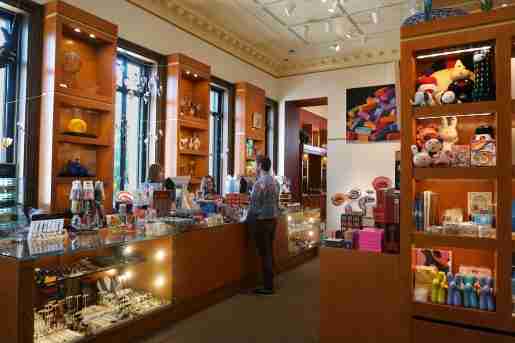 A view of the gift store cash wrap area at the Toledo Museum of Art Store. Since the pandemic, patrons enter through a door in the back of the shop. A view of the gift store cash wrap area at the Toledo Museum of Art Store. Since the pandemic, patrons enter through a door in the back of the shop.Kristen Kreider, director of retail and customer experience at the National Museum of American Jewish History Museum Store in Philadelphia, tries to create eye-catching, layered displays that are approachable and engaging. “We might group by a specific holiday, color, or subject matter, and incorporate merchandise that may not be within the exact theme of a display but appeal to the person viewing it,” she said. For example, a Justice Ruth Bader Ginsburg themed display may include books on other famous attorneys, opera (one of her passions), or Vote themed products. For home décor, displays imitate vignettes that might be found in a home such as wine glasses next to a cheeseboard and ice bucket, or a picture frame sitting next to a small stack of books. 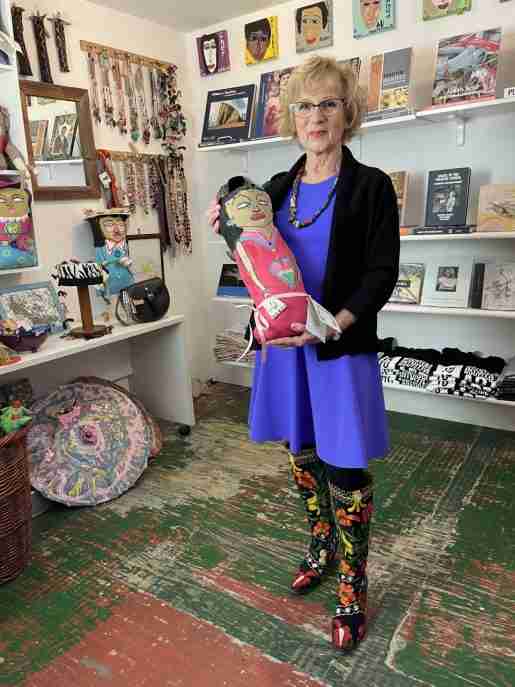 Intuit Store Buyer and Merchandiser Julie Blake of the Intuit Store at the Center for Intuitive and Outsider Art in Chicago, Ill. To best protect guests and staff during the pandemic, the store has been closed to shoppers, and a QR code has been displayed that guests can use to access an illustrated checklist of merchandise. Museum personnel assist shoppers with their selections. Intuit Store Buyer and Merchandiser Julie Blake of the Intuit Store at the Center for Intuitive and Outsider Art in Chicago, Ill. To best protect guests and staff during the pandemic, the store has been closed to shoppers, and a QR code has been displayed that guests can use to access an illustrated checklist of merchandise. Museum personnel assist shoppers with their selections.Creating Eye-Catching Displays 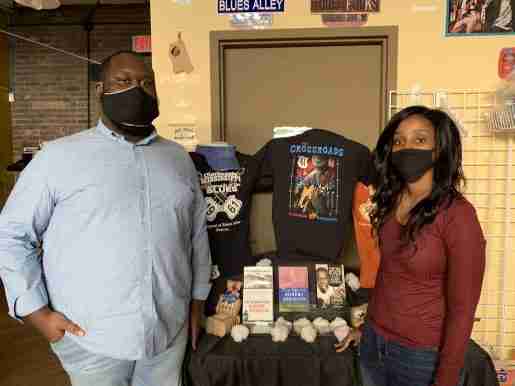 April Show, gift shop manager, with, at left, Kenyon Smith, senior sales associate, the Delta Blues Museum in Clarksdale, Miss. Shaw said when creating a display, she chooses one item to focus attention on as a starting point. April Show, gift shop manager, with, at left, Kenyon Smith, senior sales associate, the Delta Blues Museum in Clarksdale, Miss. Shaw said when creating a display, she chooses one item to focus attention on as a starting point.The Pandemic’s Impact 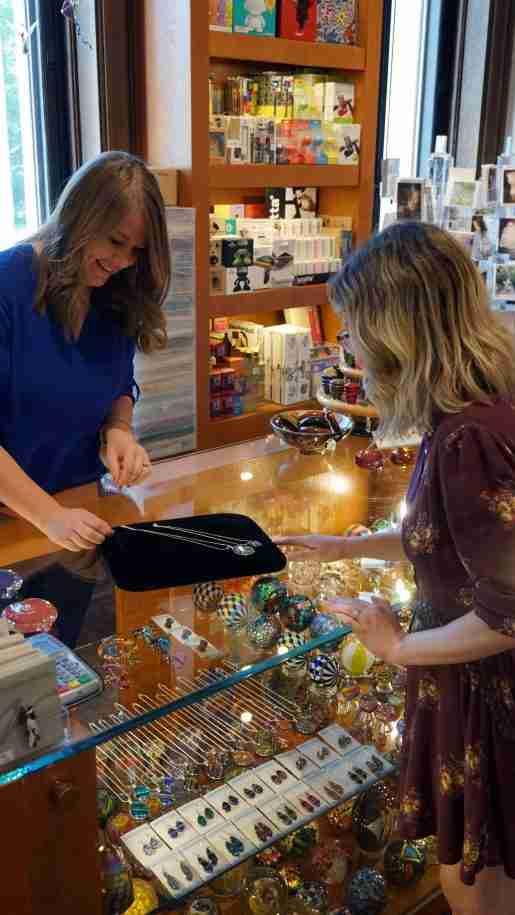 People photographed looking at jewelry at the Toledo Museum of Art Store. Because of the pandemic, shoppers exit through the front door. People photographed looking at jewelry at the Toledo Museum of Art Store. Because of the pandemic, shoppers exit through the front door.To best protect guests and staff, Julie Blake, store buyer and merchandiser at The Intuit Store at the Center for Intuitive and Outsider Art in Chicago, Ill., said only museum personnel are allowed into the store. “We installed Plexiglas at the cash register and viewing areas and rearranged display cases so merchandise can be seen from the storefront,” she said. A QR code is displayed that guests can use to access an illustrated checklist of what’s in store. Intuit staff assist guests at the front counter, where they bring over items of interest. Smaller items are displayed by the cash register that serve as great add-on purchases and gifts. In a typical year, annual revenue is $35,000 at the 120-square-foot shop. 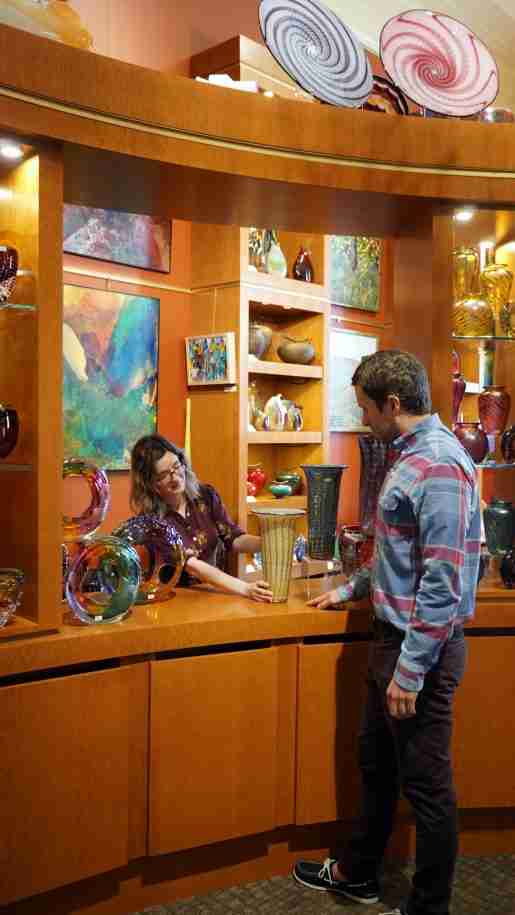 Individuals photographed looking at a gift object at the Toledo Museum of Art Store. During the pandemic, signage has directed shoppers how to natvigate the 1,520-square-foot store, or to ask for help. Individuals photographed looking at a gift object at the Toledo Museum of Art Store. During the pandemic, signage has directed shoppers how to natvigate the 1,520-square-foot store, or to ask for help.Heather Blankenship, retail operations manager at the Toledo Museum of Art Museum Store in Toledo, Ohio, said the pandemic changed the store’s traffic pattern. Patrons now enter through a door in the back of the store that was never previously opened and exit through the front door. Signage explains how to navigate the 1,520-square-foot store or ask for help. 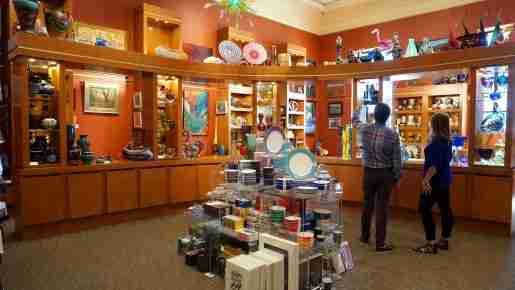 Individuals photographed with displays at the Toledo Museum of Art Store in Toledo, Ohio. The pandemic has changed the store’s traffic pattern. Individuals photographed with displays at the Toledo Museum of Art Store in Toledo, Ohio. The pandemic has changed the store’s traffic pattern. |
